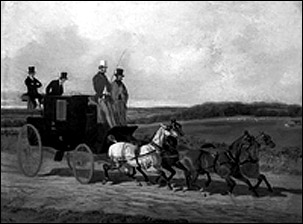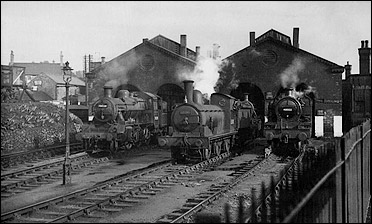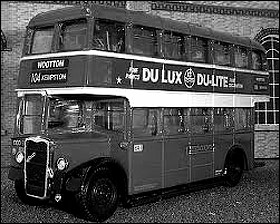|
|||
|
|||
|
The state of our roads has always been an issue and it seems that In the 18th century, turnpike trusts, made up of local landowners, began to be set up in order to levy tolls on road users to pay for their upkeep. The Act of Parliament that authorised the road that ran through Burton Latimer to be turnpiked was passed in 1753 and the trust’s powers were continued in 1780, 1801 and 1822, finally expiring in 1876. Burton Latimer was on the road from Barton Seagrave to Westwood Gate, Knotting, just over the Bedfordshire border and was the southern extension of the Market Harborough to Cranford Road, 40ft. wide, ‘from near the dwelling of William Miller the elder (known more recently as Attfield’s farm on the corner of Church Street and Cranford Road) ……………… to the dwellinghouse of William Eady adjoining the windmill and from thence in a straight line to the Kettering and Thrapston turnpike road at Barton Lane. Barton and isham Road, 30ft. wide, from the Lordship of Burton near a Gate called Barton Gate ……………. To the aforesaid Isham road ………….. (now known as Harrowden and “The Commissioners have not diverted, changed or altered, but have left the several turnpike roads leading over the lands and grounds by the said Act directed ……. to the breath of 60ft. on all parts ……. “ In 1846, the Northampton Mercury reported that John Eady, Surveyor of the Highways in the Parish of Burton, charged Robert Abbott of The relative improvement in the surface of the roads was appreciated by passengers on the coach services that were being set up throughout the country and mail coach journey times were drastically reduced. Burton Latimer was on two mail coach routes; ‘The Royal Mail’ was a passenger coach from Leeds to London via Wakefield, Barnsley, Sheffield, Chesterfield, Mansfield, Nottingham, Melton Mowbray, Oakham, Uppingham, Kettering, Higham Ferrers, Bedford, Shefford, Hitchin, Welwyn and Barnet. This coach left ‘The George’ at The approach of a coach was signalled by the guard sounding the post horn, giving people waiting for it a few minutes notice of its arrival. If it was not scheduled to stop, this would allow time for the Letter Receiver to prepare to catch the bag of letters, which would be tossed out of the passing coach, and to prepare to throw a bag containing the outgoing mail to the guard. In Burton Latimer, Thomas Burnaby, innkeeper at the ‘Waggon & Horses’, Kettering Road, for at least 33 years, was described as ‘letter receiver’ in a 1849 trades directory. In 1812, there was a reference to a stop to pick up a brace of ducks from the ‘’Red Cow Inn’ by ‘The Royal Mail’ before it was robbed of sixteen letter-bags in Finedon on its way to Higham Ferrers. (The Red Cow was opposite the row of shops now occupied by Arthur Turner Ltd. and others). ‘The Red Cow’ advertised stabling and was still employing an ostler in 1901. In 1923, the Although many of the houses that belonged to businessmen and tradesmen had stables and coach houses (or at least somewhere to park a gig or trap) there has always been a demand for means of transport without the reliance on public services. This need was met in a variety of ways. In 1911, Fred Norton, whose bakery was on the corner of Station Road and Kettering Road, advertised “Traps & Waggonettes for hire” and since then a search through town guides and directories have shown many taxi proprietors and car hire businesses including the Giliatt Brothers, Church Street; Charlie Ward, High Street; Walter (Curley) Pearson, Station Road; Fred Smith, Church Street; W.F. Brown, Bakehouse Lane; Roger Saddington, Station Road and Regency Cars, High Street. The town’s first motorbus service was provided by the Midland Railway Company, which provided a service from
Two bus services were provided by Burton Latimer operators. Starting just after the First World War, John Meadows, The Leicester & Hitchin Railway, later to be absorbed into the Midland Railway, came to Burton Latimer in 1857 and the line was extended to St. Pancras in 1868. In 1877, a short tramway was built to connect the nearby Wallis’s Flour Mill and in 1895, a siding was constructed to serve the newly built Burton Latimer Gas Works. The railway station was first known as ‘Isham for Burton Latimer’, but in 1923, when the
Opened in 1866, the Kettering to Huntingdon railway passed through the parish and many people will remember the notorious narrow hump-back bridge carrying the A6 over it in Kettering Road and ‘Black Bridge’ in Cranford Road. Not far from ‘ Bus services information courtesy of Roger M. Warwick author of ‘Bygone Buses of Northamptonshire’
|
|||


